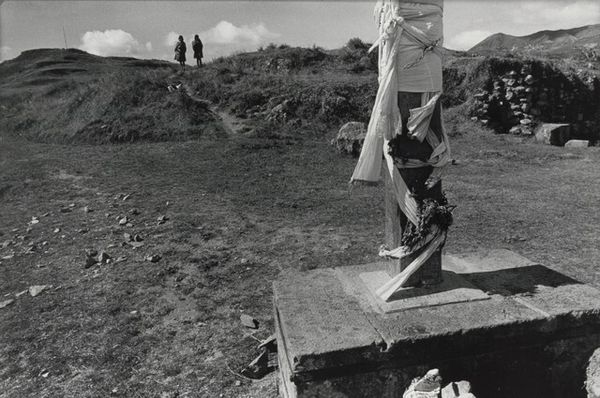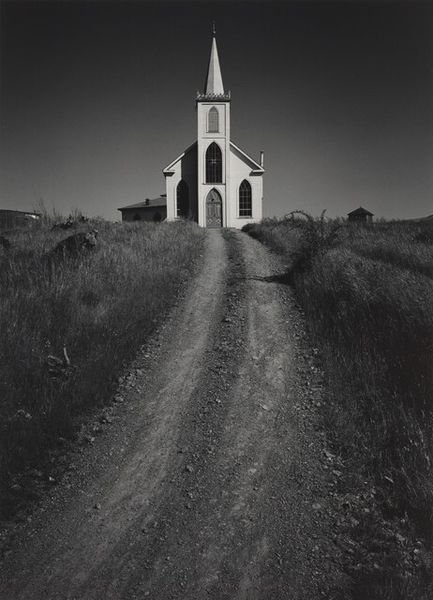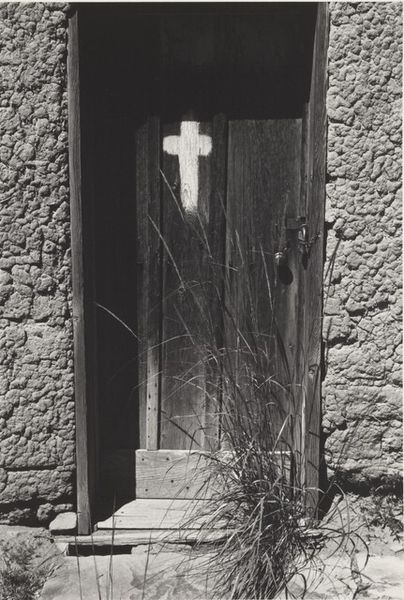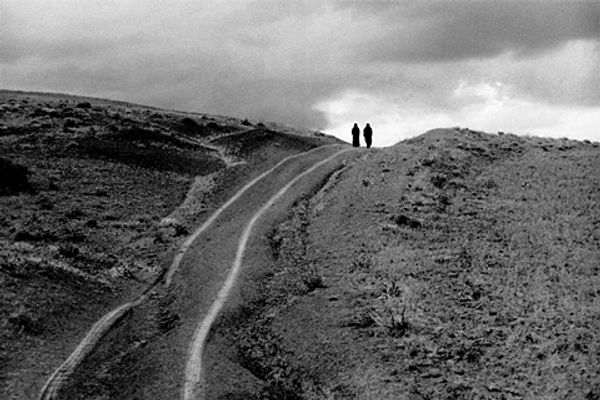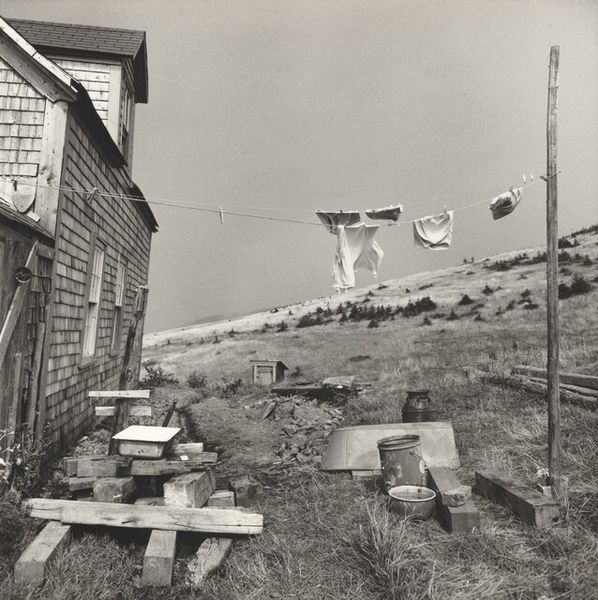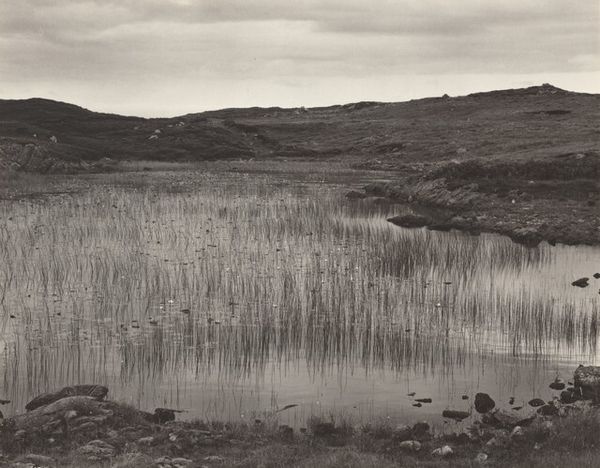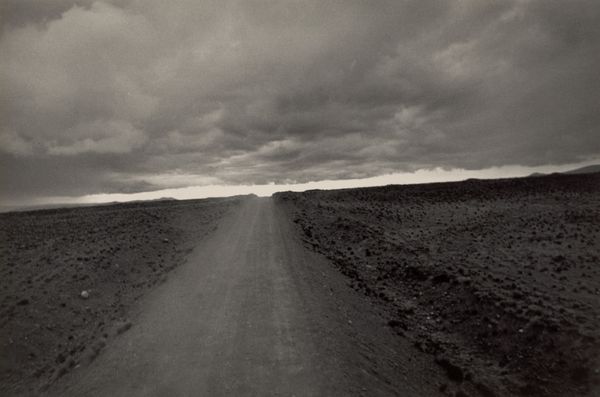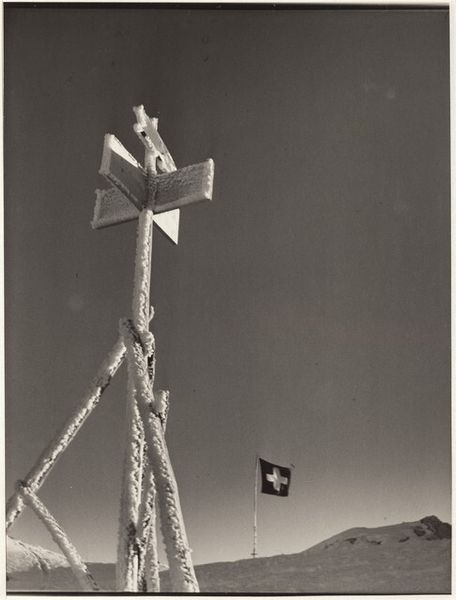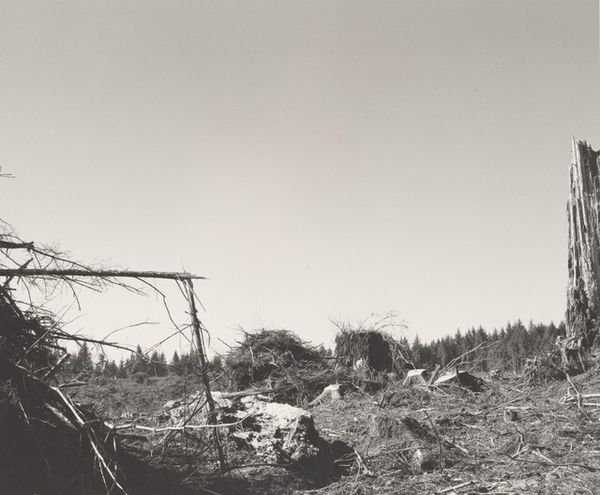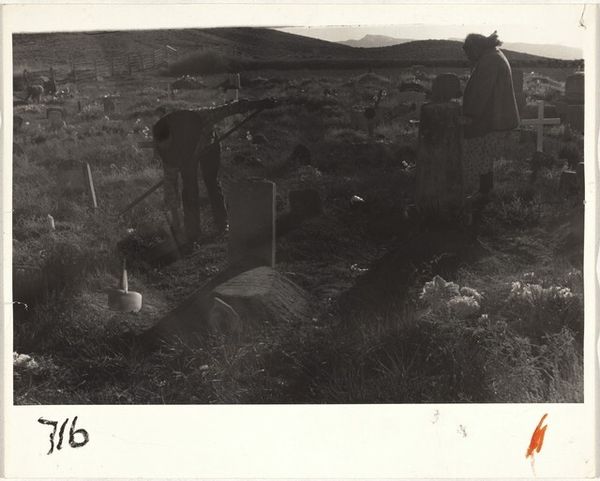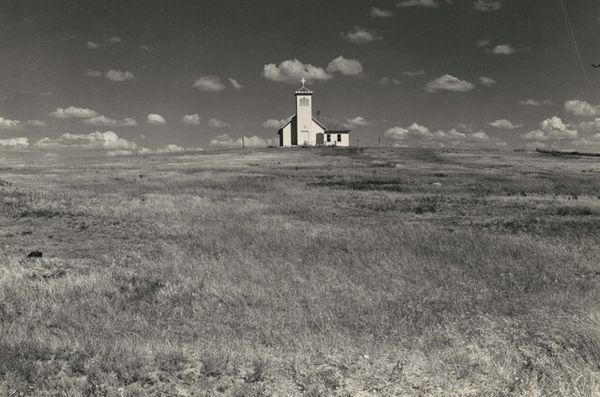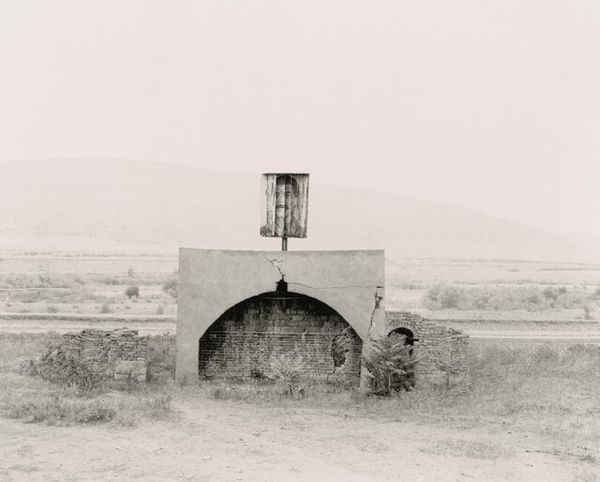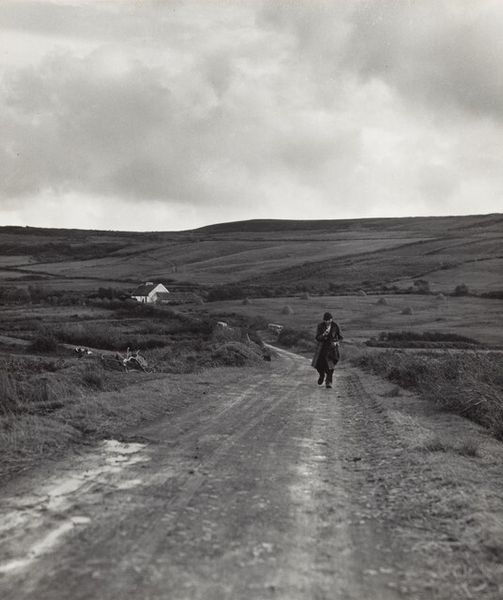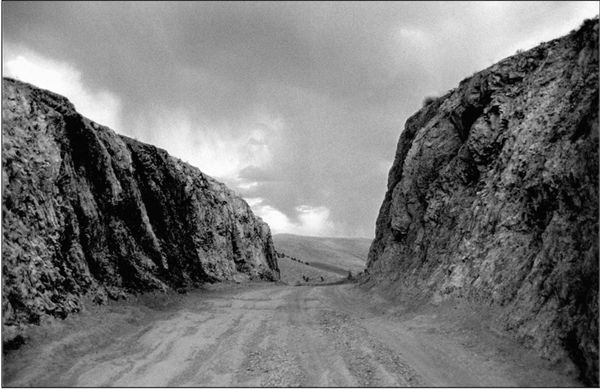
photography
#
photorealism
#
black and white photography
#
landscape
#
street-photography
#
photography
#
black and white
#
monochrome photography
#
monochrome
#
monochrome
Dimensions: image: 18.5 × 28 cm (7 5/16 × 11 in.) sheet: 24.5 × 35 cm (9 5/8 × 13 3/4 in.)
Copyright: National Gallery of Art: CC0 1.0
Editor: This black and white photograph, “Altiplano, Peru,” was taken by Ed Grazda in 1974. It features a prominent cross in a stark landscape. There's a ladder leaning against it, and what looks like offerings attached. It feels very grounded and earthy to me, even spiritual. What’s your take on this, considering its setting? Curator: I see this as a powerful commentary on the relationship between faith, labor, and the land. The weathered cross, seemingly built of local stone, speaks volumes about the resources available to the community and how they are used to express belief. The ladder becomes incredibly important: is this a means of practical repair and continuous engagement, or does it imply an incomplete or broken faith? The placement of these objects--the means of their creation and the implications of their use--that is the story. Editor: So, the materials themselves tell a story about the people and their relationship to their environment? Curator: Precisely. Consider the landscape itself. It seems harsh, requiring hard work to cultivate or even traverse. The cross, then, is not just a religious symbol but also evidence of physical labor within that specific, challenging environment. Are the "offerings" manufactured objects, repurposed elements, items acquired and redistributed as commodities? Each one adds to this complex understanding of local economies and their tangible connection to religious practices. Editor: That's fascinating. I hadn’t thought about the economy of faith expressed through these specific materials. Curator: How does understanding the production of this image--the photographic process, the distribution of black-and-white photography in the 70s--factor into our view of both this place and our global relationship to it? Editor: Good question. It makes you realize there's more to a landscape photograph than just… a landscape. Curator: Absolutely. Looking at art through a material lens reveals the hidden layers of production and consumption embedded within the artwork itself. We move away from appreciating an untouchable symbol to engaging with both its creation and continued utility within a social reality. Editor: This has really opened my eyes. I'll never look at landscape photography the same way again.
Comments
No comments
Be the first to comment and join the conversation on the ultimate creative platform.
